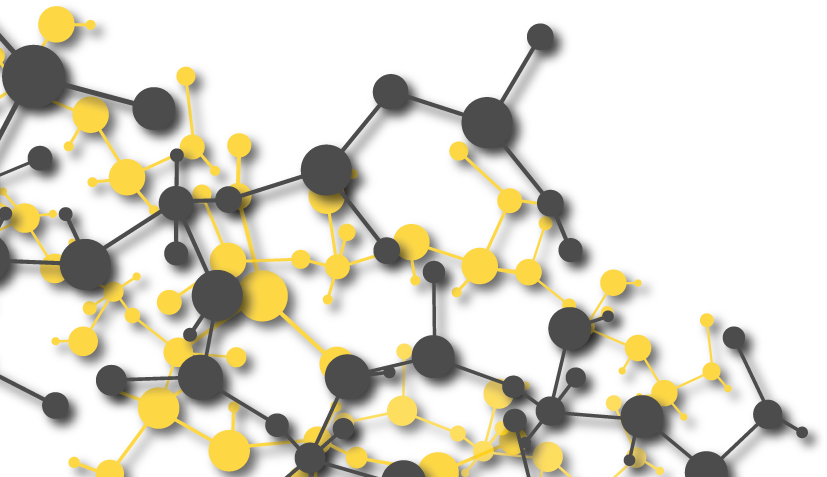We have written in this space about different performance polyols used to achieve the desired performance of elastomers in various applications. In addition to the disocianate type, polyols offer formulators an ability to achieve a variety of processing and performance advantages.
In this article, we are bringing it all together through a direct comparison of the key attributes of each polyol family, for the purpose of helping users with a quick guide for polyol selection when formulating coatings, adhesives, sealants, and elastomers.
Critical Properties for Specific Applications
A very important step for proper polyol selection is to determine the key properties for a given application and the environment in which the parts are required to perform. Urethane parts, for example, are used for their toughness, versatility, and durability. It’s critically important to ensure that the initial properties will not significantly deteriorate over time, due to adverse environmental exposure. Selecting the best polyol for a specific formula can be the difference between making a high-quality product or one that’s low performance.
Common examples of negative impacts the environment can have on urethane parts, which can accelerate their deterioration, include hydrolysis of ester-based urethane in hot and humid conditions, as well as the loss of properties that ether-based materials normally exhibit when exposed to either a hot environment or to direct sunlight.
A good understanding of the inherent characteristics of each polyol chemistry is key for making a proper material selection for any particular application and avoid loss of modulus, tensile, and tear strength due to environmental exposure.
Next, we’ll cover the basic chemistry of each polyol group, the key attributes of their physical properties, their environmental/chemical resistance, and the typical applications we see for these types of polyols.
Polyether Polyols
The two major families of polyether polyols are polytetramethylene ether glycols (PTMEG) and polypropylene glycols (PPG).
PTMEG is the premier polyol used in high-performance polyurethane elastomers. PTMEG-based polyurethanes exhibit superior resistance to hydrolytic cleavage, good mechanical properties retention at low temperature, high resiliency, good processing characteristics, and excellent mechanical and dynamic properties. Strain-induced crystallization of the PTMEG soft segments, exact difunctionality, and low acid values are all contributing factors to the good mechanical properties of the associated polyurethane elastomers.
PPG polyols have excellent hydrolysis resistance and low temperature properties as well. However, when compared to PTMEG polyols, the PPG polyols have inferior mechanical properties and are more prone to thermo-oxidative degradation.
Being in a liquid state at room temperature, PPG polyols make an excellent choice for room temperature systems.
Polyethers have low glass transition temperature (Tg), which imparts good retention of physical properties and impact resistance at low temperatures. They are the proper choice for applications where urethane parts are expected to perform in very cold environments.
Although polyether polyols exhibit excellent hydrolytic stability, they have poor resistance to non-polar, hydrocarbon-based solvents and should not be used in applications where the parts will be exposed to mineral oils. In these environments, their properties will deteriorate relatively quickly.
PTMEG-based urethanes are the material of choice for applications where the following properties are important:
- Good impingement abrasion (high resiliency)
- Hydrolytic stability in humid/wet conditions
- Good dynamic properties (wheels, rollers, roll covers)
- Low temperature applications
Furthermore, PTMEGs have relatively low viscosities, making them easy to process and achieve good mixing.
Polyester Polyols
Adipate and phthalate-based polyesters
Conventional polyester polyols are produced through condensation reaction of dicarboxylic acids and diols. Polyester segments can be crystalline or amorphous.
Compared to polyethers, polyesters offer higher tensile strength, cut and tear resistance, better sliding abrasion and flex fatigue resistance. They also exhibit very good resistance to oil, grease, nonpolar solvents and oxidation.
Most adipate glycol polyesters are FDA-compliant, which makes them a good option for prepolymers and urethane articles safe to use in food contact applications.
Polyester polyols generally have higher melting temperature and higher viscosities, compared to polyethers and polycaprolactones, which can present some processing challenges. They have higher Tg than polycaprolactones and ethers, which may limit their use at low temperatures due to stiffening and modulus increase in such conditions.
Polyesters exhibit broader molecular weight distribution and have higher degrees of acidity, which may affect catalyst reactivity. Carboxylic acid monomers, such as adipic acid, leave residual organic acid moieties, which adversely affect hydrolytic stability.
The inherent properties of polyester polyols make them an excellent choice for the following industries and applications:
-
Mining applications: screens, conveyor belt scraper blades
-
Roll covers
-
Pipeline pigs
-
Food contact (FDA compliant)
Polycaprolactone Polyols
Polycaprolactone polyols are a special class of polyester polyols, produced using an exclusive addition polymerization process in which a low molecular weight diol or triol (initiator) is reacted with a six-carbon cyclic-ester (lactone) monomer. A wide variety of glycol initiators are used to allow customization of the performance profiles of the caprolactone polyols and their polyurethane elastomers.
The lower reaction temperatures required, as well as the absence of an organic acid reaction intermediate, affords PCL polyols with very low acid values (contributes to hydrolytic stability), low polydispersity (contributes to low viscosities), and perfect primary hydroxy end-functionalities (good stoichiometry control with reactivities that can be adjusted to meet specific application requirements).
Polycaprolactone polyols are used in polyurethane elastomer applications where high durability, performance in broad temperature range, good hydrolysis resistance, and excellent elastomeric properties are required. They are generally selected for urethane applications where high tensile strength, excellent cut, tear, and flex fatigue resistance, good sliding abrasion, good chemical resistance to oil, grease, and nonpolar solvents and high temperature and oxidative stability are needed.
Compared to adipate-based polyester polyols, caprolactone polyols demonstrate the following performance advantages in polyurethane elastomers:
-
Enhanced resistance to hydrolysis
-
Greater weatherability and UV stability
-
Better low temperature properties (low Tg) and high temperature performance
-
Higher chemical resistance to oils, fuels, and solvents
-
Cut, chip, and tear strength
-
Lower viscosities and low polydispersity
Formulators can further enhance these general property sets by the proper selection of the “initiator” diol used to produce the various grades of polycaprolactone polyols. Hence, the polycaprolactone polyols exhibit a great versatility in the targeted design of polyurethanes requiring demanding performance attributes and service life. In addition to the initiator type used, polycaprolactone polyols are offered in a wide range of molecular weights, functionalities (diols, triols, and tetraols), with low acidity values and narrow molecular weight distribution.
Polycarbonate Diols
Structurally, polycarbonate diols are linear, aliphatic polyols with the carbonate linkages. Polycarbonate diols exhibit higher hydrolytic stability than polyester polyols because they absorb only low levels of moisture and generate CO2 on hydrolysis at higher temperatures, without producing an acidic moiety.
Acid moieties, generated through hydrolysis of conventional polyesters, autocatalyze the hydrolysis in the soft-block of the polyester-based polyurethane. Polycarbonate diols represent the next generation of ultimate performance diols for polyurethane elastomers. Their combination of good resistance to heat, hydrolysis, weather, and abrasion, aging stability, consistent performance, and extreme durability is unattainable by other polyols.
We see the following attributes of polycarbonate diols in their use for polyurethane development:
- Excellent hydrolytic stability (except in base) & low water absorption
- Excellent high temperature stability
- Good chemical resistance
- Weatherability & UV resistance
- Superior environmental stress crack resistance
- Low yellowing and high gloss retention
- Superior durability, impact and abrasion resistance
- High mechanical properties
- Long-term retention of designed properties in aggressive environments
In addition, we see many marketplace applications for polycarbonate diols, including these:
- Waterborne polyurethane dispersions
- Oil field and mining polyurethane cast parts
- Pipe linings and exterior coatings
- Electrical/electronic encapsulation
- Artificial leather coatings
- Optical devices
- Medical devices
- Elastomeric rollers
- Thermoplastic polyurethanes (TPUs)
Better CASE Products with Performance Polyols from Gantrade
We hope that this article will help you in your consideration of different polyols for your CASE products. This content is meant to help with polyol selection for optimizing your coatings, adhesives, sealants, and elastomers for higher performance and ease of processing. However, the professional staff at Gantrade is ready to assist you in your selection, ensuring that you match the right performance polyol to your exact needs.
Specific information about each of these polyols can be found in other articles on our blog. Contact Gantrade today to get started.














